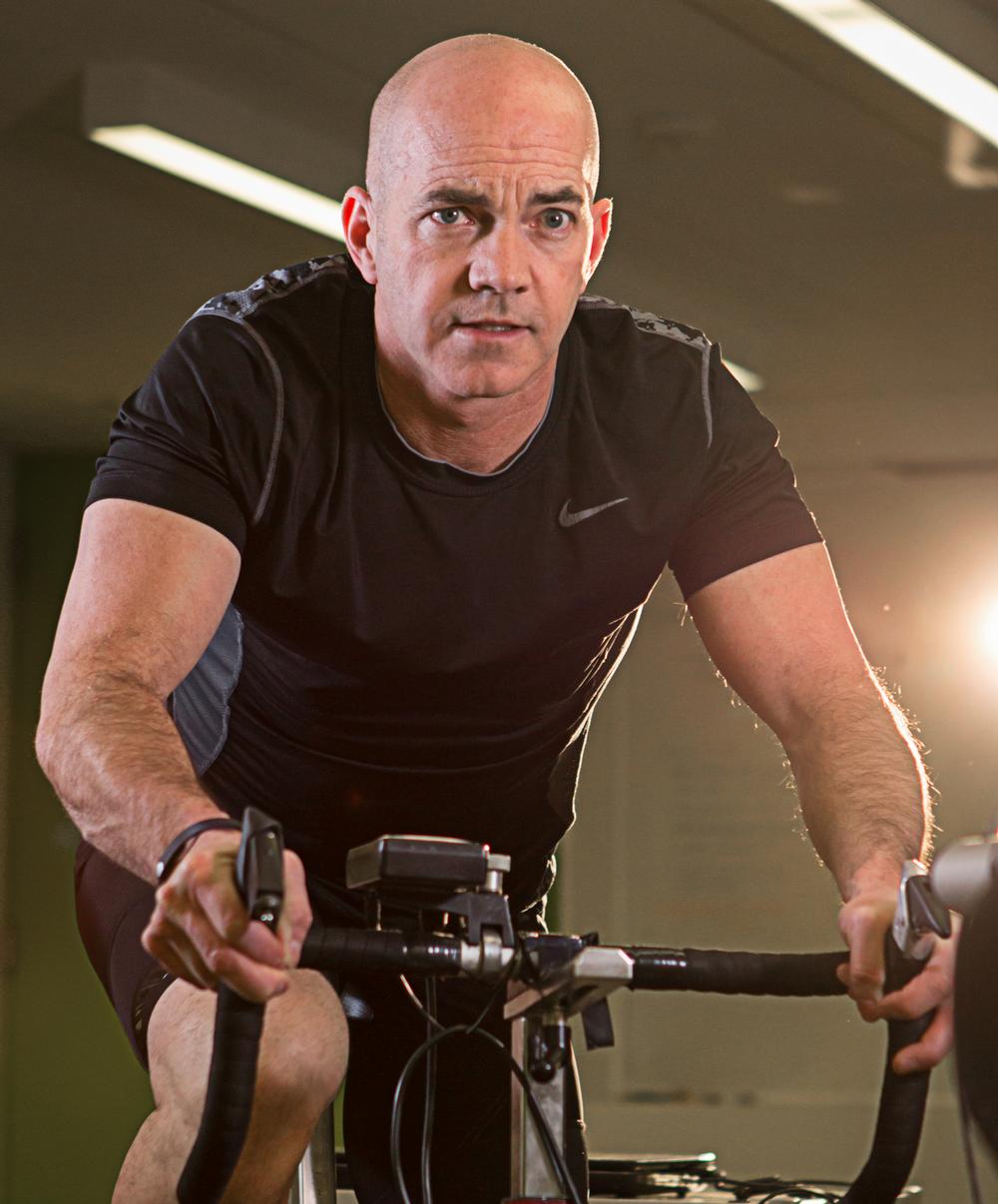How did the ‘One Minute Workout’ come about?
Lack of time is the most common reason given for not exercising. For some, that’s clearly an excuse, but there are people who really don’t have an hour to spare each day. The problem is when a full workout can’t be done, we often tend to do nothing at all. My team and I – at McMaster University in Ontario, Canada – have been investigating time-efficient exercise strategies. Part of our approach is showing that even if you have just 10 minutes, you can get in a high-quality workout with an interval training strategy.
This research gave rise to the one minute workout – a workout made up of three 20 second bursts of very hard exercise that can be done on virtually any cardio exercise machine or simply by moving your body. It’s set within a 10-minute time frame that includes a warm up, cool down and recovery in between the bursts of activity, but the real hard work lasts for just one minute.
What has your research shown about this style of training?
The idea that short, hard exercise can be used to boost endurance, performance or capacity has been around for some time, but my team and I have been focused on the question: “How low can you go?”
We’ve done studies in which we compared the results achieved by people who did the one minute workout three times a week with those of others who stuck to the recommended 50 minutes of continuous exercise three times weekly. We saw very similar levels of improvement in the cardiorespiratory fitness, insulin sensitivity and energy production by muscle cells among both groups – even though the time spent exercising differed five-fold.
What does this potentially mean for the future of the fitness industry?
Short but effective interval workouts could really benefit those in the fitness industry. For example, in gyms and health clubs with limited space or equipment, people may be able to cycle through the available equipment faster, while reaping the same results. So, rather than a single person spending 60 minutes jogging at a slow pace on a treadmill, three people could use that treadmill for a 20 minute interval workout each and still reap the same benefits or better.
This would mean better turnover and possibly more clients coming through. Interval training also offers more variety because there’s no longer any need for workouts to be long and monotonous; gym goers can stay more engaged with their exercise programmes and continue to come to the gym, as opposed to getting bored and turning away.
Is the one minute workout already being used by fitness providers?
If you look at the American College of Sports Medicine’s top worldwide fitness trends, high-intensity interval training (HIIT) has been at or near the top for several years running. I think this demonstrates the level of interest in short-duration workouts.
I believe the vast majority of health and fitness clubs offer some sort of interval-based workout, although not necessarily the one minute workout. However, it’s important that owners and fitness professionals understand the science of these workouts, at least to an extent that allows them to apply interval training principles appropriately while avoiding the trap of over-promising results.
Let’s not forget that interval training ranges from interval walking – which is a very gentle approach – to sprinting uphill as hard as you can. There’s a very wide spectrum there and some strategies are more appropriate for some individuals than others. Interval workouts have to be properly matched to a person’s fitness level, so trainers need to use common sense before offering these workouts to clients.
What about outside the gym?
While the one minute workout plan involves a 10 minute time commitment, there’s no reason why people cannot do short bursts of exercise like taking a few flights of stairs three times through the day. It doesn’t take a lot of warm up or cool down. This is a direction my research needs to go in – taking it out of the lab, applying it in real-world indoor and outdoor settings, and involving the types of interval strategies people can integrate in their everyday lives. This still requires skilled and knowledgeable trainers that can show people how to apply interval training principles properly before moving into a real-world setting.
Is one minute the absolute minimum?
I don’t think people will be reading about the 10 second workout in the near future! But I do think that 10 or 20 second bursts of activity spread through the day – the concept of exercise snacking – may be the way forward. It’s also important to remember there’s no free lunch. The one minute workout has the attraction of offering low volume exercise, but the intensity needs to be very high. I’m also commonly asked about the weight loss benefits of short duration exercise. Intervals can be a time efficient way of burning calories, but it’s much easier to control weight via the amount of food we eat, rather than through exercise.
























































